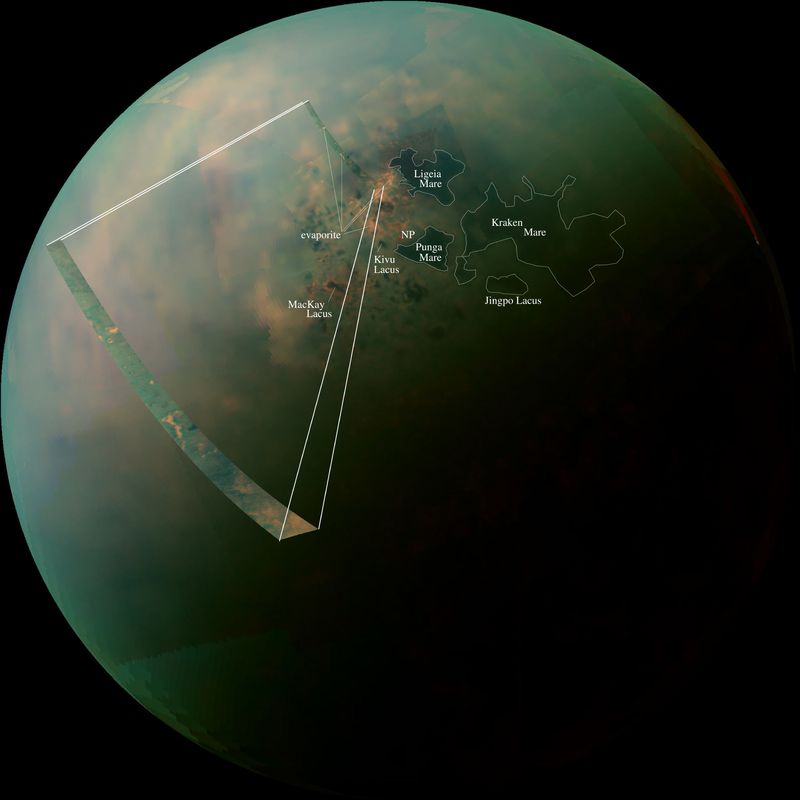Titan Appears Earth-Like in New Image – NASA has released a composite image of Saturn’s largest moon Titan, constructed from photos taken by the Cassini spacecraft, that shows the moon’s surface instead of its hazy atmosphere.
The image shows terrain mostly on the Saturn-facing hemisphere of Titan, including the dark, dune-filled regions of Fensal to the north and Aztlan to the south, which together form the shape of a sideways letter H.

Titan is tidal locked, meaning the same side always faces towards Saturn, just as the moon is tidal locked to Earth.
Cassini flew as close as 10,000 kilometers to the “rich and complex” world of Titan during the November 13 flyby, which was considerably higher than typical flybys at 1,200 kilometers but allowed the spacecraft to capture moderate-resolution views over wide areas, with a resolution of a few kilometers per pixel.
The image, which shows different levels of detail due to the different altitudes the individual pictures were taken from, was taken at near-infrared wavelengths that penetrated the thick orange haze of Titan’s atmosphere.
The colors in the image are false and represent the wavelengths of light collected by Cassini’s visual and infrared mapping spectrometer (VIMS) instrument, from blue at 1.3 microns, through green at 2.0 microns, to red at 5.0 microns.
Visible light is centered around 0.5 microns.
‘Remarkably Earth-like processes’
NASA says images taken by the Cassini orbiter show “remarkably Earth-like processes” shaping the surface of Titan.
The moon is covered with tall dunes, river channels and great lakes, and is the only moon in our solar system to have a thick atmosphere.
There are relatively few meteorite craters on Titan, meaning that its surface must be relatively young, being reshaped by wind, liquid and tectonic movement similar to processes on Earth.
However, because the surface of Titan is at -179 degrees Celsius, the sand is composed of dark hydrocarbon grains, solid surfaces are water ice as hard as rock, and the liquid present on Titan’s surface, in its atmosphere and falling as rain, is methane, which is gaseous on Earth.
Although the atmosphere of Titan is mostly nitrogen (about 95 per cent), most of the remainder is methane, not oxygen.
Methane, a compound of carbon and hydrogen, is broken down by cosmic radiation in Titan’s upper atmosphere, contributing to the orange haze that obscures the surface from visible light.
The carbon, hydrogen and nitrogen in Titan’s atmosphere result in a range of organic molecules, making it similar to Earth’s early atmosphere before life developed.
The Cassini mission is a cooperative project between NASA, the European Space Agency (ESA) and the Italian Space Agency, and is managed through NASA’s Jet Propulsion Laboratory (JPL), which designed, developed and assembled the Cassini orbiter and its two onboard cameras.
More Images Of Titan:
Source: abc








